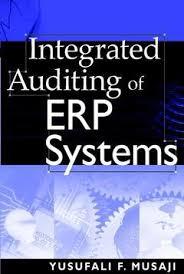Answered step by step
Verified Expert Solution
Question
1 Approved Answer
For Question 12 , is 'n' the number of times per year cash inflow and/or cash outflow takes place? I know that 15%, 21%, and






For Question 12, is 'n' the number of times per year cash inflow and/or cash outflow takes place?
I know that 15%, 21%, and 18% are the discount rates for/on the problem found on Question 12. However, are 15%, 21%, and 18% considered the effective interest rates or the Contract (or Stated) interest rates?
Can you help me think up how to describe the Present value of -$173,160 and the discount rate of 15% in one or two sentences for Question 12?
Do you notice that 12% is the effective interest rates (or effective annual interest rates, market interest rates) and 10% annual coupon interest rate (cpn) and Contract (or Stated) interest, or interest ratefor the problem and example below? 1. RE. 14-01 Bond Issue On January 1, Canglon, Inc., issues 10%, 5-year bonds with a face value of $150,000 when the effective rate is 12%. Interest is to be paid semiannually. Prepare calculations to prove that the selling price of the bonds is $138,959.90. Click here to access the tables to use with this exercise. Round your answers to two decimal places, if necessary. Canglon. Inc. has an annual-coupon-interest rate (cpn) of 10.0%, and the Canglon pays-10.0% Contract-(or Stated) interest, or interest rate. A Contract (or-stated)-interest rate and annual-coupon interest rate (cra) is 10%. Effective interest rate and Market interest rate-is-12% Question 12 Smith Company has the following annual cash flows: Year 0:-173,160 Year 1:614.718 Year 2: -726,406 Year 3: 285,714 Which discount rate provides a positive net present value (NPV) given this information? 15% 2196 18% Solution : Option 21% is the correct option. Explaination: 0 1 - 173160.00 Cash Flows PV Factor15% PV Cash Flow@15% PV Factor 21% PV Cash Flow @21% PV Factor18% PV Cash Flow @18% - 173160 11 - 173160.00 1 - 173160.00 1 614718 0.870 534537.39 0.826 508031.40 0.847 520947.46 -726406 0.756 -549267.30 0.683 0.718 -521693.48 285714 0.658 187861.59 0.564 161278.10 0.609 173894.36 Net Present Value -28.31 4.44 -11.661 2 -496145.07 3 *Net Cash Flow = Cash Flow * PV Factor **Net Present Value = Sum of present value of Cash flow Above Table it is cleary calculated that @21% NPV is positive. *-$173,160-is-Future value (or Future cash flows, future income-stream) and par (face) value-on- Smith Company's stock/bond.--$173,160 is the-Cash-outflow. I =-Expected and/or required rate of return (profit) for a particular investment (or on an investment) i=-Discount rate n=#of times per year interest-is-compounded. I [Method #2] -Present value of Principal *Refer to-M-9-and-M-10-of-Learning Objective-M.3-Compute and use the present value of a single-sum Of Time Value of Money-Module-of-Chapter 5-The-Income-Statement And The Statement of Cash Flows of Intermediate Accounting Reporting and Analysis, 2017 Update-2-e- James Wahlen ISBN-10: 1337116610-Cengage Learning 2016 The Present:Value of A Single Future Amount Formula 1 PV = FV X (1 + i)" 15 100 You must divide-1-by-1, the two-integers (whole numbers), using-a-division-box. 1 0.15 100)-157 1 =-0.151 1 1 PV = -$173,160 X (1 + 0.15)0 1 1 (1 +0.15) 1 (1.15) 1 =-1.15401 PV=-$173,160-x-19 1 PV = -$173,1601
Step by Step Solution
There are 3 Steps involved in it
Step: 1

Get Instant Access to Expert-Tailored Solutions
See step-by-step solutions with expert insights and AI powered tools for academic success
Step: 2

Step: 3

Ace Your Homework with AI
Get the answers you need in no time with our AI-driven, step-by-step assistance
Get Started


